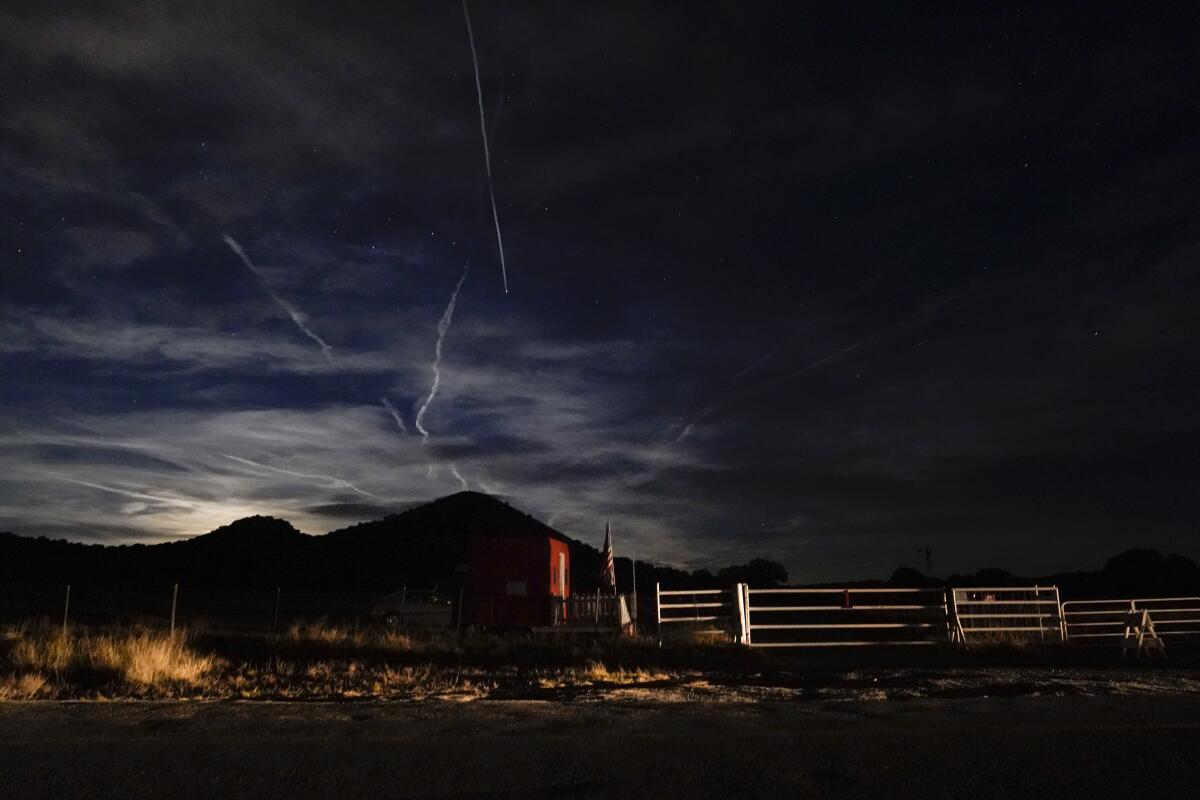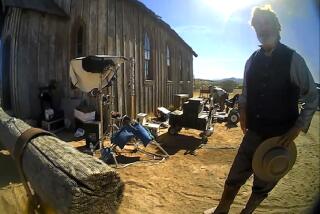Column: ‘Rust’ showed more gun control is needed on movie sets. This California lawmaker is working on it

SACRAMENTO — There’s a very simple answer to Alec Baldwin’s repeated question after he accidentally shot and killed a movie crew member.
The actor-producer kept asking: “What the f… just happened?”
What happened was undeniable: Every basic rule of commonsense gun safety was broken.
The first principles of safe gun handling are:
— Always assume the gun is loaded.
— Never point a gun at something you don’t want to hit with a bullet.
— Keep your finger off the trigger until you want to shoot.
My dad sternly lectured me and my brother on these tenets one Christmas long ago as he handed us our first guns: bolt action single-shot .22 rifles. The lecture came first, then the three of us walked behind the garage on our small citrus ranch in Ojai, set up a pile of logs and we boys practiced safe shooting.
Baldwin must not have gotten the lesson and neither did key members of the crew on the set of his “Rust” movie production near Santa Fe, N.M.
Or maybe they arrogantly assumed such rules don’t apply to movie sets because, well, guns there behave differently than in the real world. No, firearms are the same deadly weapons everywhere.
Baldwin was rehearsing a shootout scene, playing an outlaw in 1880s Kansas. He pulled from his holster a loaded Colt .45 revolver that he’d been told was “cold” — unloaded — and fired. The lead bullet killed cinematographer Halyna Hutchins, 42, penetrating through her and wounding director Joel Souza, 48.
Baldwin apparently had not checked the revolver’s chamber himself, and neither had the assistant director who handed it to him.
The actor-producer and crew members not only ignored universally recognized and practiced gun safety rules, they also violated the film industry’s own strong guidelines.
The first paragraph of the industry’s “Safety Bulletin #1” reads in capital letters:
“BLANKS CAN KILL. TREAT ALL FIREARMS AS THOUGH THEY ARE LOADED. ‘LIVE AMMUNITION’ IS NEVER TO BE USED NOR BROUGHT ONTO ANY STUDIO LOT OR STAGE.”
The bulletin, prepared by a labor-management committee, includes a list of 19 rules, including: “Refrain from pointing a firearm at anyone, including yourself…. NEVER place your finger on the trigger until you’re ready to shoot…. Know where and what your intended target is.”
But “Safety Bulletin #2” does allow for the possible use of real bullets. It reads, “there may be a very rare occasion when ‘LIVE AMMUNITION’ must be used to obtain an effect.” It lists several safety criteria.
There was no such occasion on the set of “Rust.” And no one has publicly explained how live ammo wound up in Baldwin’s revolver, or among the roughly 500 rounds of blanks and dummy shells seized by investigators.
State Sen. Dave Cortese (D-San Jose), chairman of the Senate Labor Committee, has announced he’ll push legislation to ban not only live ammunition but workable guns from film sets in California.
“Those working behind the scenes to entertain and bring joy to millions all over the world shouldn’t go to a set worrying if they will return home safely to their family,” he said in a statement. “Our entertainment industry must do a better job of ensuring safe working conditions for crews.”
There were gripes among “Rust” crew members about workers’ safety.
When paparazzi tracked down Baldwin days after the Oct. 21 tragedy, he described it as a “one-in-a-trillion episode.”
Not really. There have been other accidental gunshot deaths on film sets in recent years.
Cortese disputes Baldwin’s characterization.
“This wasn’t about chance. It was a series of five or six mistakes,” the lawmaker says. “That’s not chance. You only get one chance with a gun. You can’t be sloppy with firearms and you can’t take chances.”
Cortese’s bill would ban from film sets all guns with firing pins.
“People say, ‘What’s wrong with blanks?’ If a firearm can shoot a blank, it can shoot a bullet,” he says.
Anyway, blanks have killed on movie sets.
“Real guns shouldn’t be used as props anymore,” Cortese continued. “If they need a guy shooting a firearm, they need to go to a firing range.”
A longtime film crew member, who didn’t want to be identified criticizing her industry, told me there’s no reason these days to even have blank ammo in moviemaking. The sound and visual blasts can be dubbed in by technology.
Cortese calls the industry’s gun safety guidelines “a paper tiger” because, as “Rust” proved, they can too easily be ignored. “You need some state penalty.”
The lawmaker doesn’t want to add his bans on workable guns and live ammo to the penal code. He’d like them to be enforced by the state labor commissioner under the occupational safety and health act.
Assemblywoman Sharon Quirk-Silva (D-Fullerton) isn’t convinced the state needs to intervene. She’s chairwoman of the Assembly arts and entertainment committee.
“Sometimes we legislators want to immediately fix a problem, but it should start at the negotiating table with union and motion picture representatives,” she says.
Quirk-Silva says she subscribes to former Gov. Jerry Brown’s dogma: “Not every problem deserves a law.”
But “Rust” showed the need for tighter gun control on movie sets. Cortese’s ideas make sense.
At the very least, every actor and crew member should be required to sit through a firearms safety course.
More to Read
Sign up for Essential California
The most important California stories and recommendations in your inbox every morning.
You may occasionally receive promotional content from the Los Angeles Times.











